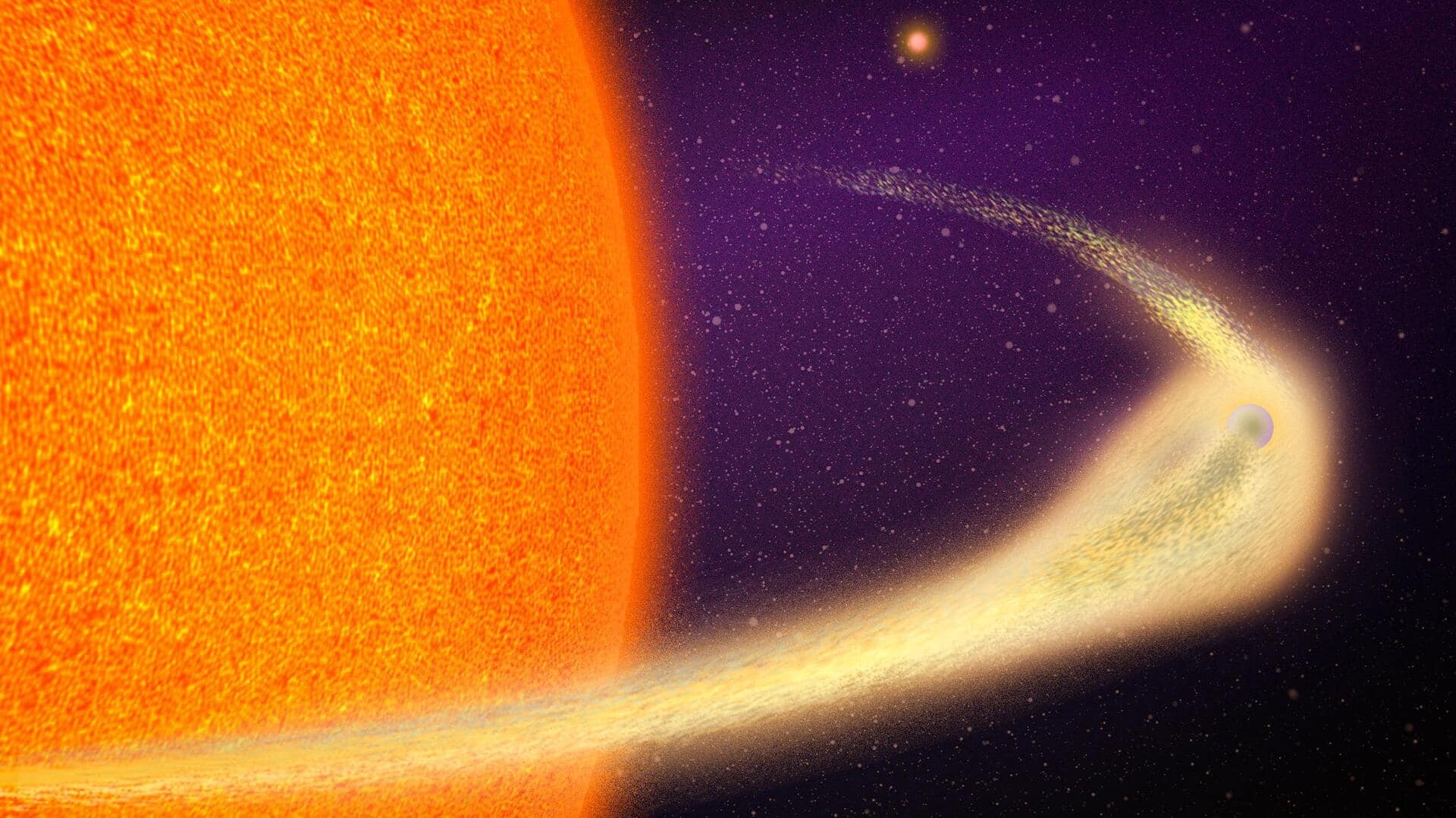
This planet 140 light-years away has a comet-like tail
What's the story
In a groundbreaking discovery, a team of astronomers from Massachusetts Institute of Technology (MIT) has identified a planet that is rapidly disintegrating and leaving behind a comet-like tail.
The planet, which lies some 140 light-years away from Earth, is roughly the size of Mercury but orbits its star at a very close distance.
It completes one full orbit every 30.5 hours and is believed to be covered in magma.
Process
Disintegration and mineral loss
The planet was discovered using NASA's Transiting Exoplanet Survey Satellite (TESS), an MIT-led mission that scans nearby stars for transits, or periodic dips in starlight indicating orbiting exoplanets.
The team noticed a unique transit pattern with a varying dip depth every orbit.
This is what led them to confirm the presence of a rocky planet trailing a long comet-like tail of debris.
Loss
The planet is shedding material every day
The team estimates that the planet is losing the equivalent of one Mount Everest worth of material every time it orbits its star.
Considering its small mass, they predict that the planet could completely disintegrate in about one to two million years.
"We got lucky with catching it exactly when it's really going away," said Avi Shporer, a collaborator on the discovery.
By chance
Discovery was accidental
The newly discovered planet, dubbed BD+05 4868 Ab, was found nearly by chance.
"We weren't looking for this kind of planet," said Marc Hon from MIT's Kavli Institute for Astrophysics and Space Research.
"We were doing the typical planet vetting, and I happened to spot this signal that appeared very unusual."
The team's findings have been published in the Astrophysical Journal Letters.
Tail length
The tail stretches up to 9 million kilometers
The tail of the disintegrating planet is humongous, stretching up to nine million kilometers long, or about half of the planet's entire orbit.
Hon explained that "the shape of the transit is typical of a comet with a long tail," except it's unlikely this tail has volatile gases and ice as you'd expect from a real comet.
However, mineral grains evaporated from the planetary surface can hang around long enough to show such a distinctive tail.
High temperatures
The planet is believed to be roasting at 1,600°C
The research team estimates that the planet is roasting at roughly 1,600 degree Celsius, or close to 3,000 degrees Fahrenheit.
As the star heats up the planet, any minerals on its surface are possibly boiling away and escaping into space where they cool into a long and dusty tail.
This dramatic demise of this planet is due to its low mass, which lies between that of Mercury and the Moon.